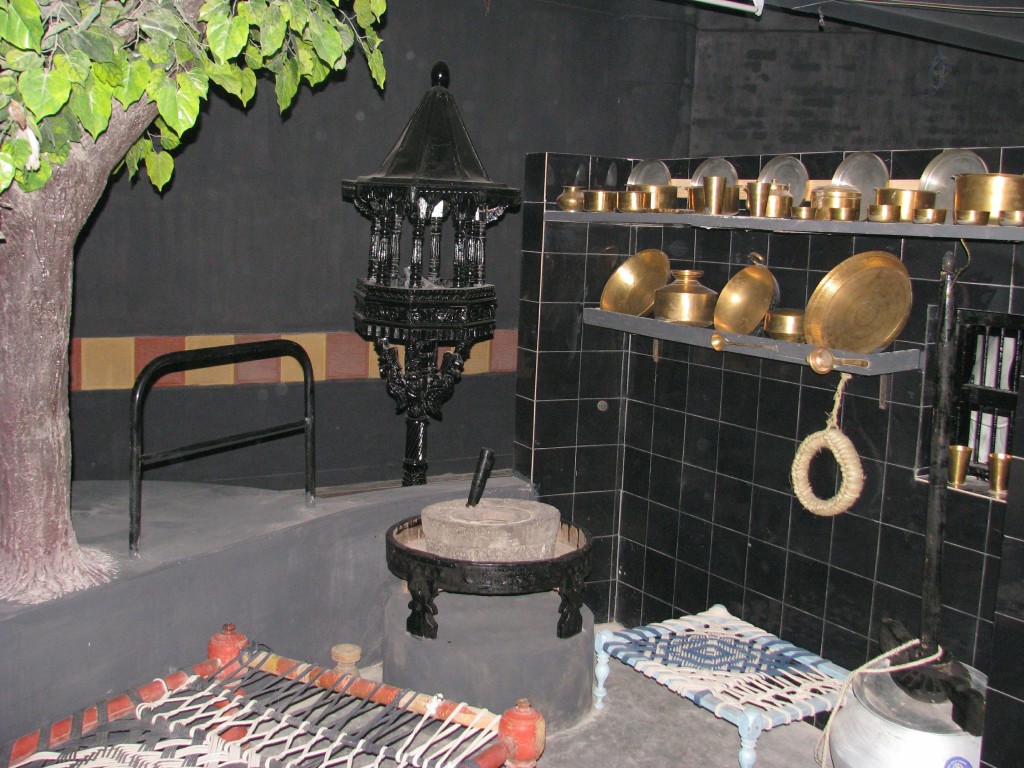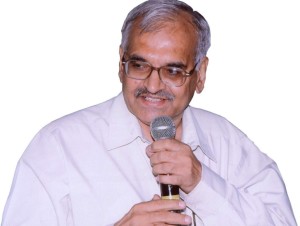Spread over pitch dark area of about 2,000 square yards, the project is the only one of its kind in the country.
As I entered the hall, I was transported from the realm of the sighted to the domain of the visually impaired. With trepidation, I began to walk gingerly, dependent upon my articulate guide, Jaidev, who is visually impaired.
Welcome to the project called Vision In the Dark, set in the premises of Blind People’s Association (BPA) located in an upscale Vastrapur suburb of Ahmedabad. The underlying objective of the project is to sensitise people about how fraught the path of the unsighted is.
“We want to sensitise people. The project operates on two premises–how difficult it is for anyone to manage darkness and change the perception of the people about how the visually challenged manage their life by developing alternative senses, and can even progress,” says Dr Bhushan Punani, executive secretary of BPA.
An alumnus of the prestigious Indian Institute of Management, Ahmedabad, Dr Punani entered the lives of the inmates at BPA like an angel, leaving plush managerial posts behind.
Vision in the Dark is his brainchild. It is spread over pitch dark area of about 2,000 square yards, and the project is the only one of its kind in the country. The concept was developed by Mr David Curtis and Mr David Sadden from the UK, with existing models in Vienna and Amsterdam.
The idea of the project was first conceived in 2005 when a team of Health Link World Wide, UK, created an experiment at the BPA premises. The team led by Dr Punani spoke to visually impaired people across age groups and backgrounds to discern their physical, social and psychological difficulties.
Finally, Vision in the Dark came into being in October 2015.
Here, the whole area is sealed, and everything is painted black–from the brickwork to the floor, and furnishings such as curtains, tables, chairs, fans, air conditioners and even the path used to assist pedestrians who are visually impaired. There is no scope of light entering the area. With authentic ambient noises from street stalls, rough roads and other barriers, the authorities have tried to communicate the problems of the visually disabled.
Before entering the hall, the guides insist that visitors read the instructions given on the board outside the hall.
Visitors are requested not to panic or scare others on entering the facility, and if they wish to leave the hall, they are to inform the guide who would escort them out.
The organisers have found that individuals suffering from hypertension couldn’t endure the darkness, while some others would start sweating and be afraid of stepping into darkness.
Vision in the Dark is an elaborately designed black hall, complete with several compartments namely the temple, the village, a garden, a theatre restaurant, caves, a shrine of Vaishnodevi, and statues of national leaders.
The idols in the temple area and statues of national leaders are fitted with audio sensors which aid in identifying the idol or statue. My guide, Jaidev, would ask the visitors to touch the idol and identify them. Thereby communicating the challenge faced by visually impaired people because authorities don’t allow them to touch the idols.
They have also set up a village complete with a square, trees, birds, and a well where women draw water.
Likewise, there is a garden with plants, grass, birds, and wooden benches. How would the blind feel when they visit the village and the garden? That is what the organisers would like those of us with vision, to imagine. A small theatre that seats 50 people plays an audio clip from the Aamir Khan film, Taare Zameen Par, which centres around persons with disabilities.
How would a blind person visit a theatre, you wonder. As you go round the hall, your other senses are shaken from their usual indolent ancillary role in navigation, and you begin to learn about sensory inputs. That is how the blind manage their lives.
In the hall, one would realise that even the simplest tasks like opening doors, climbing stairs, pouring hot drinks, or eating a meal in the dark, are challenging.
Visitors would marvel at the achievements of the disabled that reflect the indomitable human spirit and its capacity to adapt, overcome and succeed.
For the blind, though, the biggest impediment is not the frailty of their body or the hostilities of the physical world but the failure of their fellow beings to recognise them as the same.
The visit to the Vision In the Dark, albeit for a couple of hours, was compelling. The experience, though, did not touch upon other weighty issues faced by the visually impaired — such as difficulties in finding employment or attaining a sense of accomplishment and self-worth.
(Edited by Shruti Singhal)
Article Source: The Better India


